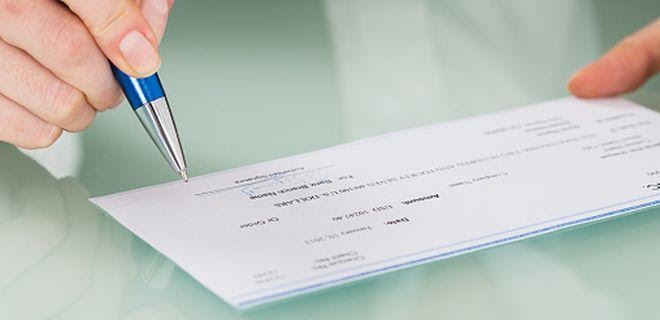How To Write A Check?

Table of Contents
Carry cheques and be a part of the cashless society
Are you filling a check for the first time in your life? Then you must be packed with multiple agitations and confusion related to it, such as where to sign and how to write a check, where to fill the amount, and many more. Checks are still commonly used, although less popular than they were before. People nowadays are more comfortable in moving cashless.
A cashless society might resemble more or less a science novel, but we’re already on its way of consumption. Various compelling and powerful entities, including governments and major financial services companies, are behind the move to a cash-free world. Even many experts and analyzers of the current banking system and government currencies advocate this currency abolition.
The multiple benefits you can get while carrying cheque rather than cash are
- less security risk.
- If the check is signed, further protection is guaranteed.
- You can send a check via post/courier/representative to another individual.
- You can take advantage of a check while you pay for a number of items, including utility bills, insurance premia, etc.
Procedures to fill up a cheque:
Step 1:
Put the date on the top right corner of the cheque. Writing down the date on the check is essential because the lender will not be able to tell when the check has been given by the manager if the date is not placed on a cheque. The check is payable until the expiry of 3 months from the date of the check.
Step 2:
The next important section looks like,’ Pay to the order of.’ It is the space where the name of an individual or company you want to pay should be written down. You can also write “cash” only if you don’t know exactly the name of the person or organization. Nonetheless, be mindful that it may be dangerous if the cheque is ever stolen or lost. Everyone can withdraw or deposit the amount written on your cheque.
Step 3:
Many checks have an empty box just to the right of the payor’s line with the currency symbol in front. You will type in the amount you pay once you have filled out the specifics of who you want to compensate. All you need to do is to write the exact amount you want to pay without any extra information. and make sure you do not overwrite anywhere in the check; otherwise, there will be a possibility of the check getting bounced.
Step 4:
Underneath the pay line, you’ll see another blank line, typically with the term “dollars” accompanying it. This is where the check amount should be entered into words. If the sum is written in words, a double check is made available at the atm, so that if the number box becomes difficult to read, the words provide a reference. If the terms and numbers differ, most banks will use the words to reimburse the checksum. Try to write these terms very simply, with both cents and dollars. Use the word “and” only between cents and dollars.
Step 5:
In order to finish writing the check, you will have to sign your name. The most important step, however, is the easiest to forget. If an error is present in another area, a check could yet be processed, but your bank will not be processed by the absence of a signature, resulting in check fees returned, delayed fees, or other costs. In the right bottom corner of the inspection is the signature area. You only have to sign your name and complete the check.
When you make any payments through a check, the check number, which is located in the right top of the check, shall be recorded and remembered. It also helps you to track your controls and guides you to ensure that your controls are not getting misplaced.







